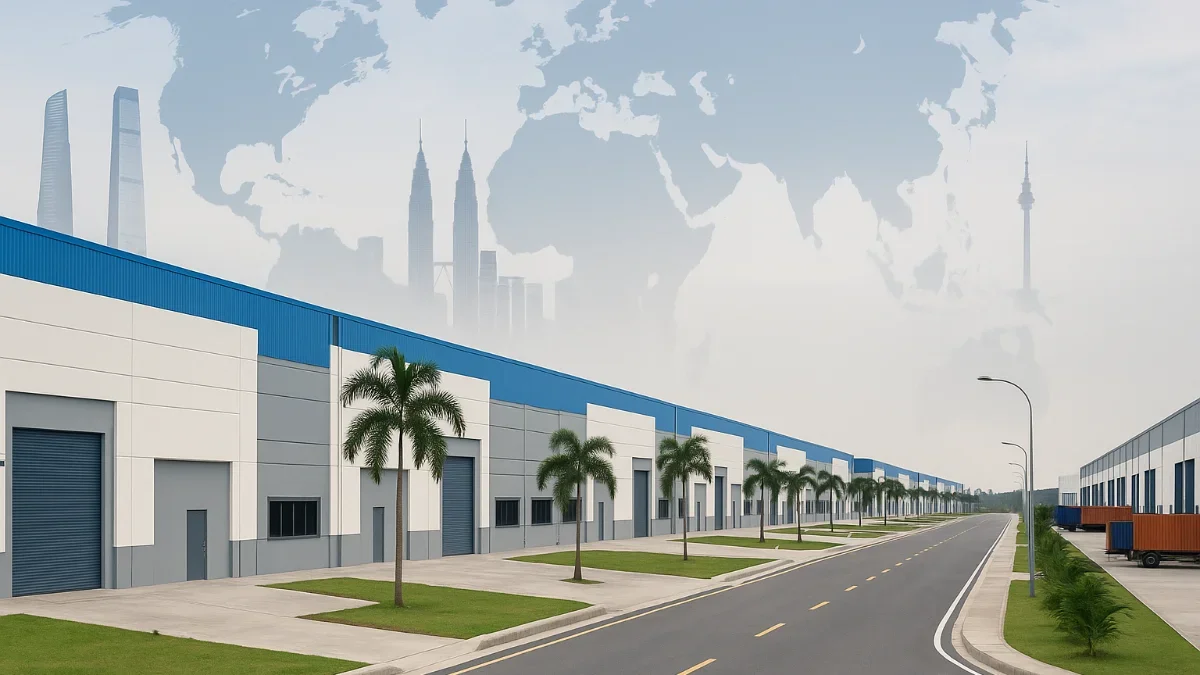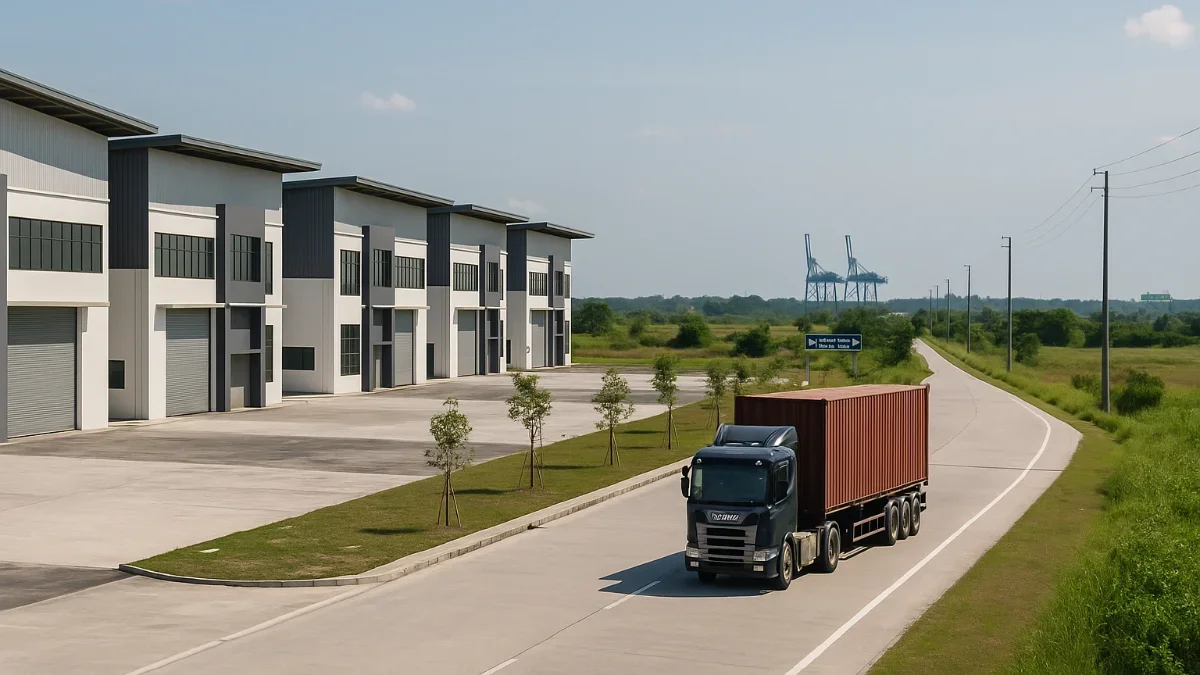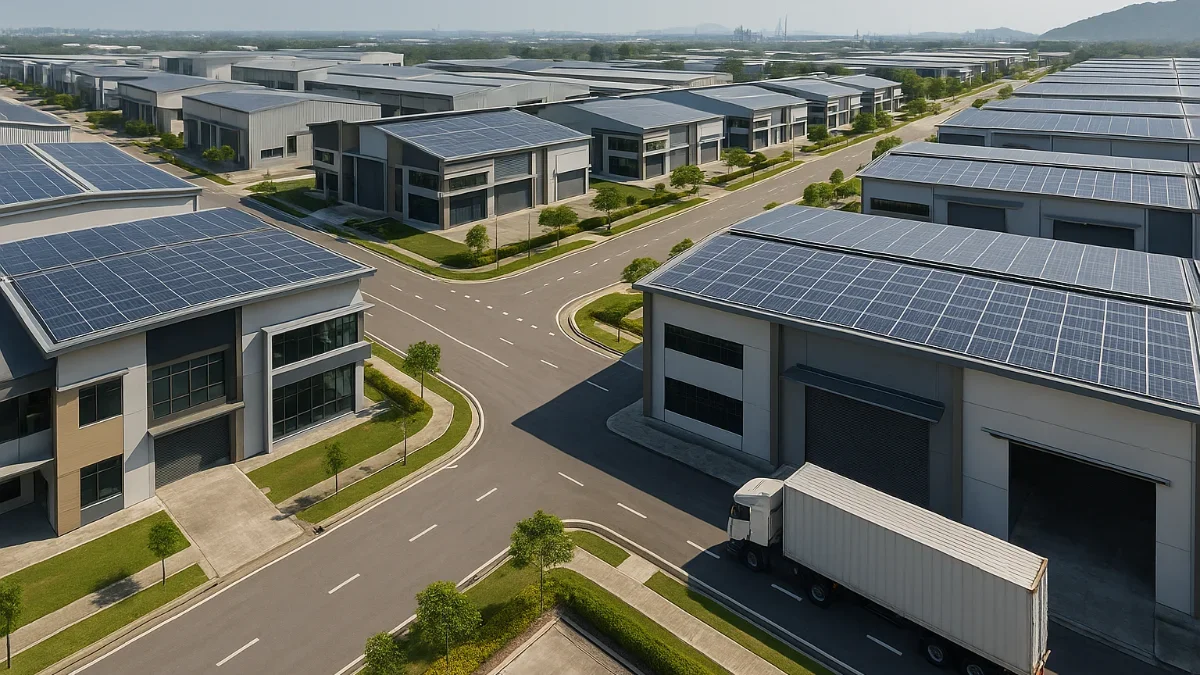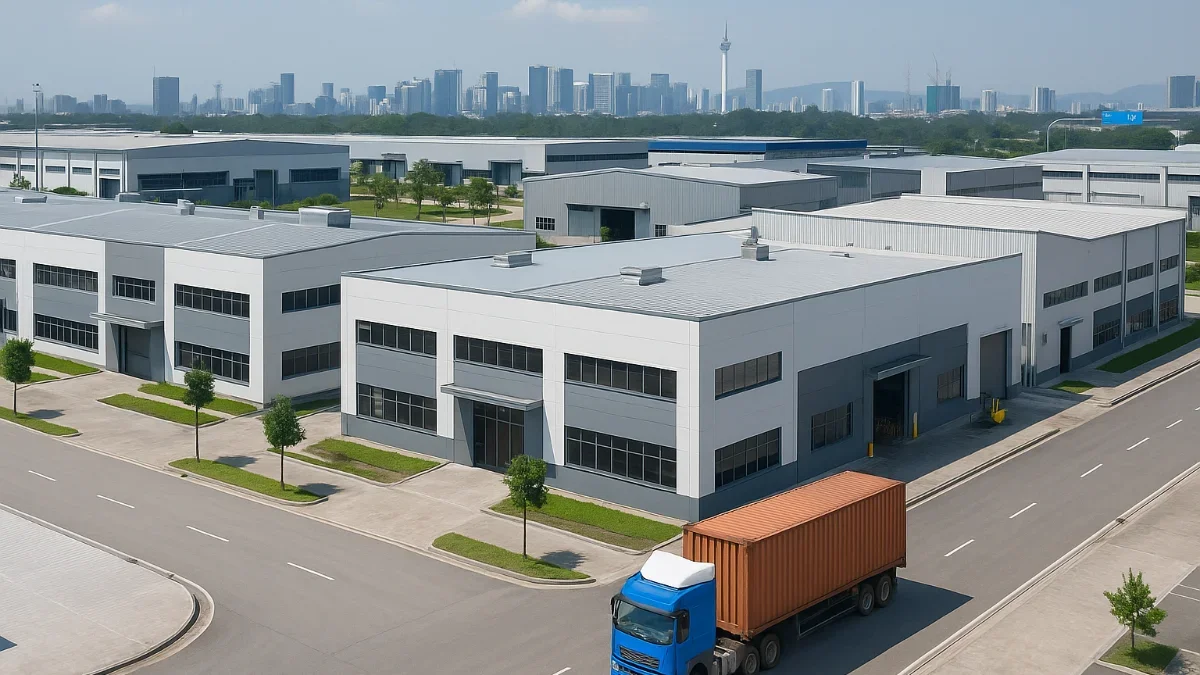Discover how Malaysia’s industrial parks stand out globally — from cost efficiency and land flexibility to ESG compliance and smart manufacturing ecosystems. Learn how our industrial landscape compares with China, Singapore, Vietnam, and Western economies.
How Malaysia’s Industrial Parks Compare with the World: Infrastructure, Cost, and Innovation
Industrial parks are the heartbeat of a nation’s manufacturing growth. While Malaysia has built a strong reputation for cost-efficient and strategically located industrial zones, global peers such as Singapore, China, and Vietnam are raising the benchmark in digital infrastructure, ESG standards, and automation. Let’s explore how Malaysia’s industrial parks perform on the global stage in 2025.
1. Land Cost & Accessibility
Malaysia’s industrial land prices — particularly in Klang Valley, Johor, and Penang — remain among the most competitive in Asia. Average industrial land in Shah Alam or Klang ranges from RM80 to RM180 per sq. ft, whereas Singapore’s industrial land can exceed RM1,000 per sq. ft due to scarcity and JTC regulation.
Comparatively, Vietnam’s emerging hubs (e.g., Binh Duong and Hai Phong) offer rates of RM60–120 per sq. ft, making them attractive to export manufacturers seeking ASEAN expansion. However, Malaysia’s multi-expressway connectivity and seaport access still provide a logistics edge.
2. Infrastructure & Utilities
Malaysia’s parks are known for solid infrastructure—wide roads, strong power capacity (200–400 amps typical), and advanced water supply systems. Yet, in automation, Malaysia is catching up to advanced models like:
- Singapore’s JTC industrial estates — integrated with smart energy grids and IoT management.
- China’s Suzhou Industrial Park — built as a full ecosystem combining R&D, education, and live-work communities.
- Germany’s Industrie 4.0 zones — focusing on robotics and digital twin production environments.
Malaysia’s New Industrial Master Plan (NIMP 2030) and MIDA’s ESG incentives are steps to align local industrial parks with these global smart benchmarks.
3. ESG & Sustainability Readiness
ESG (Environmental, Social & Governance) is becoming a global mandate. In Europe and Japan, carbon reporting and renewable power sourcing are now prerequisites for tenants. Malaysia is advancing through:
- Rooftop solar installation incentives by TNB and SEDA.
- GreenRE and GBI certifications for industrial parks.
- Eco-industrial clusters like NCT Smart Industrial Park and Bukit Raja Industrial Park leading the ESG transition.
Compared to regional peers, Malaysia is mid-stage in ESG adoption — ahead of Vietnam and Indonesia, but behind Singapore and South Korea.
4. Workforce & Cost of Operations
Malaysia’s multilingual workforce, stable governance, and strong legal framework make it attractive to MNCs. Labour cost is higher than Vietnam but still substantially lower than developed economies. For instance, average manufacturing wages in Malaysia hover around RM3,500/month versus RM8,000/month in Singapore.
This balance makes Malaysia ideal for mid- to high-value manufacturing that demands skilled labour, not just low-cost assembly lines.
5. Global Benchmarks: Who’s Leading What
| Country | Industrial Park Highlight | Core Strength |
|---|---|---|
| Malaysia | Bukit Raja, Pulau Indah, NCT Smart Industrial Park | Cost efficiency, logistics, investor protection |
| Singapore | JTC Jurong Island | Smart manufacturing, automation, ESG compliance |
| China | Suzhou Industrial Park | Integrated ecosystem, scale, innovation funding |
| Vietnam | Binh Duong, Hai Phong | Low cost, FDI incentives, young workforce |
| Germany | Bavaria Industry Cluster | Robotics, automation, high precision manufacturing |
6. Malaysia’s Global Advantage
In summary, Malaysia sits between emerging low-cost zones and advanced industrial ecosystems. It combines affordability, legal stability, and geographic advantage within ASEAN’s fastest-growing market corridor. The next step is accelerating digital adoption, ESG certification, and automation readiness to meet global investor standards.



